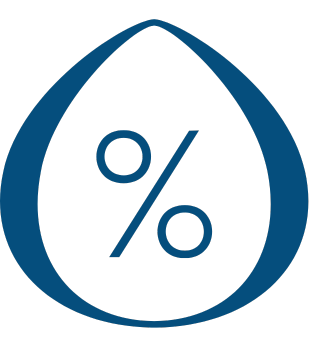Angina, also known as tonsillitis, is an inflammation of two oval-shaped nodes of tissue, the tonsils, at the back of the throat. This condition is particularly common in children, but is not uncommon in adults. The main signs of tonsillitis include swollen tonsils, sore throat, difficulty swallowing and tender lymph nodes in the neck. Treatment depends on the causative agent – viruses or bacteria – and focuses on reducing discomfort and speeding recovery. In this article, we will discuss in detail the symptoms of angina and the basic principles of treatment.
Symptoms of angina
The main symptoms of angina (acute tonsillitis) are inflamed and swollen tonsils, which can make it difficult to breathe through the mouth, particularly in severe cases. Other symptoms include:
- sore or tender throat
- Fever (temperature above 38.5 °C)
- Reddened tonsils
- White or yellow plaque on the tonsils
- Painful blisters or sores in the throat
- Headache
- Lack of appetite
- Earache
- Difficulty swallowing
- Swollen lymph nodes in the neck or jaw
- Bad breath
- Neck pain
Acute tonsillitis in children can also cause head and stomach pains, nausea and vomiting.
Although strep throat itself is not contagious, many of the infections that cause it, such as the common cold or flu, are. It is therefore important to take all preventive measures to protect not only yourself but also your loved ones.
How to treat?
A mild case, especially if it is caused by a virus such as the common cold, usually does not require medical treatment. In this case, it is recommended to start treating angina at home with measures that help relieve the symptoms:
- Rest: Resting allows the body to save energy that it could use to fight the infection.
- Plenty of warm fluids: Take warm fluids such as chamomile, calendula, sage or other teas that reduce inflammation. This not only helps to keep the throat moist, but also reduces the unpleasant feeling. Caffeine-free drinks can also have a soothing effect.
- Rinsing with salt water: This can help reduce discomfort in the throat.
- Throat lozenges: Lozenges can help soothe a sore throat.
- Using a humidifier or sitting in a steam room: Dry air can irritate the throat, so using a humidifier or spending time in a steam room can help reduce irritation.
- Pain and fever relief with medicines: Over-the-counter medicines can be used to relieve pain and fever. Topical preparations such as throat sprays and mouthwashes are also very useful.
In more severe cases, antibiotics or, less commonly, a tonsillectomy may be prescribed. If a person is dehydrated as a result of tonsillitis, he or she may need a drip for fluid replacement.
Angina surgery (Tonsillectomy)
The operation to remove the tonsils is called a tonsillectomy. Doctors usually recommend this procedure for patients who suffer from chronic or recurrent tonsillitis, especially if the disease causes complications or if symptoms do not improve.
If a patient suffers from tonsillitis or strep throat 5-7 times a year, a tonsillectomy can help to prevent further illnesses. Surgery can also relieve breathing or swallowing problems caused by enlarged tonsils.
Although tonsillectomy can reduce the risk of strep throat, it is still possible to get strep throat and other throat infections even if the tonsils are removed. There is a small chance that the tonsils may regrow after surgery, but this is rare.
Patients are usually discharged home the same day after tonsillectomy, but it usually takes 1 to 2 weeks for full recovery. The healing process can be extremely uncomfortable due to the severe pain in the throat, which can make it difficult to speak and even sleep. In addition, the sensitivity of the throat often prevents patients from eating or drinking normally, so it is important to choose mild foods and avoid hot and spicy foods.
Antibiotics
If tonsillitis is caused by a bacterial infection, your doctor may prescribe antibiotics to treat the infection. Although antibiotics can speed up the reduction of symptoms, they can also cause side effects, such as digestive problems or weakened immunity.
The most commonly prescribed antibiotic for strep throat is penicillin, which is effective in treating strep throat caused by group A streptococci. This treatment is necessary to prevent rheumatic heart disease, which can be a complication of streptococcal angina. If you are allergic to penicillin, your doctor may prescribe alternative antibiotics.
It is important to take the full course of antibiotics prescribed, which normally lasts 10 days. Even if the symptoms seem to have completely disappeared, the infection may worsen if you do not complete the full course of the prescribed medication.
Types of angina
Angina is divided into several types, which have specific symptoms and require different treatment methods. Pulmonary angina, also known as bacterial or purulent angina, is characterised by ulcers on the tonsils, where pus builds up. The other form, viral angina, usually caused by cold or flu viruses, is milder, but the symptoms can be similar to those of bacterial angina, which sometimes complicates diagnosis.
Pulsatile angina
Pulsatile or purulent tonsillitis – also known as bacterial tonsillitis. The main symptom is white sores on the tonsils where pus accumulates.
There are three forms of bacterial tonsillitis: catarrhal, in which the tonsils are only red, follicular, in which pus appears in the deeper tissues of the tonsils, and lacunar, in which pus covers the entire surface of the tonsils.
Follicular form resolves in 5-7 days and lacunar form in 10 days with timely and appropriate treatment. If left untreated, these forms of angina can prolong symptoms and increase the risk of complications
Viral angina
Viral and bacterial angina are very similar, so it’s hard to tell which is which from the symptoms alone. However, the symptoms of viral tonsillitis are usually slightly milder than those of bacterial tonsillitis.
Both types start with a sore throat and can also cause redness, swelling and pain in the tonsils, which makes swallowing difficult.
Viral tonsillitis, often caused by colds or flu, can be accompanied by milder symptoms such as coughing, nasal congestion and runny nose. In contrast, bacterial tonsillitis, usually caused by group A streptococci, can cause more specific symptoms such as bad breath.
The similarity of these symptoms makes the diagnosis difficult, and medical tests are necessary to determine the exact cause of the angina and to choose the right treatment.
Consequences of angina
Chronic inflammation of the tonsils can lead to long-term and serious health problems, including breathing problems during sleep and the spread of infection to adjacent tissues. Here are the consequences of chronic tonsillitis and potential complications, including streptococcal-related diseases, which can have long-term consequences on the patient’s health.
Consequences of chronic tonsillitis
Chronic inflammation of the tonsils can lead to several serious health problems. Firstly, persistent tonsillar enlargement can lead to breathing problems during sleep, known as obstructive sleep apnoea. In addition, the infection can spread to the surrounding tissues and abscesses can form behind the tonsils, known as peritonsillar abscesses. This condition causes severe pain and difficulty in swallowing and breathing.
Possible complications of bacterial tonsillitis
Tonsillitis caused by streptococcus, also known as streptococcal tonsillitis, can cause serious health problems. One of them is scarlet fever, which can progress to rheumatic fever, affecting the heart, joints and nervous system.
Poststreptococcal reactive arthritis can also occur, causing joint inflammation and pain. Another complication is glomerulonephritis, a type of inflammation of the kidneys that can affect kidney function.
Rehabilitation of angina
As with any illness that involves fever, dehydration or antibiotics, it is essential to take time to recover and rehabilitate the body. The recovery process should be accompanied by adequate rest, a balanced diet, and plenty of fluids to repair the damage caused by dehydration.
Sometimes, depending on individual needs and the doctor’s recommendations, it may be useful to try an anti-inflammatory drip, which contains unique preparations supplemented with vitamins B1, B6, C and magnesium that not only reduce inflammation, but also boost immunity, calm the nervous system and give the body the energy it needs to get back to its normal activities.
It is important to return to physical activity gradually and carefully, avoiding overexertion, which can prolong the recovery period. This integrated approach helps to ensure that recovery is faster and more effective.
I am missing a bit of info on our treatment methodology.
We have a CRB machine which helps the doctor to decide whether it is a viral or bacterial disease.
We have STREP tests that can be done if more data is needed.
As well as the anti-inflammatory drip, we also have antiobiotic drips, which are more absorbed through the bloodstream and work faster.
Maybe we can also write that it is possible to come in after the operation to have a lasagne, so that it hurts less and the organs don’t get too weak.




